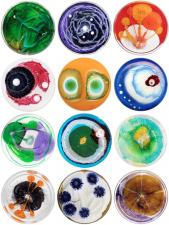
I knew in high school that I wanted to study biology, but I wasn’t ready to give up my fascination with literature, history, and art. When I started my first year at UChicago, I hesitated to declare my Biology major and instead started a Social Sciences sequence (part of the UChicago Core), called Classics of Social and Political Thought. We dived headfirst into Greek philosophy, and I was surrounded by the rich history of the classics. Each discussion was a new adventure into a past era and school of thought. By the time we reached Nietzsche, I was in too deep. But I couldn’t quite reconcile the disconnect that I perceived between the liberal arts and the hard sciences. I didn’t want to forgo my science focus, but what could the liberal arts tell me about biology? Let’s be honest, Aristotle’s ideas about the four humors in the human body were a little off the mark.
In my second year, I took a chance on a modern art class. I felt a little out of my element as we admired performative, interpretive dances and swaths of canvas with paint splattered on it. Before our first project, my professor told us to “let the form express itself” – but how much can a strip of cardboard really express itself? I mulled over the form of the cardboard in lab that day as I set up an agarose matrix for gel electrophoresis. We were separating DNA fragments from cross-strains of Drosophila melanogaster to determine whether our enzymes digested the fly plasmids correctly. Bands of DNA digests slowly moved through the matrix and dyed the gel with reds, greens, and blues. Some bands were light and sparse, almost playful; other bands were dense and dominating. The kanR band was heavy and aggressive; it stomped down the DNA ladder and stopped short of the 3 kb mark. The resulting gel matrix was beautiful. The fragment sizes were all wrong and the digests didn’t work, but the pattern on the gel reminded me of something I had seen at the Art Institute. I triumphantly told my lab partner that the bands were expressing their form.
Perhaps, Aristotle can’t tell us how to treat patients without using leeches. But there is most certainly a place for liberal arts in the hard sciences, because scenes in life are in themselves works of art. Recently, the American Society for Microbiology hosted a competition for microbiologists to grow colorful bacteria in agar and create works of art. After cultivating the bacteria for a few days at stable temperature, researchers sealed petri dishes with epoxy to cut off the oxygen supply and preserve the pictures. The winners of this year’s competition used yellow and orange bacterial colonies to create a beautiful image of nerve cells in the brain. “Life imitates Art far more than Art imitates Life,” said Oscar Wilde. I only needed to learn how to see it.